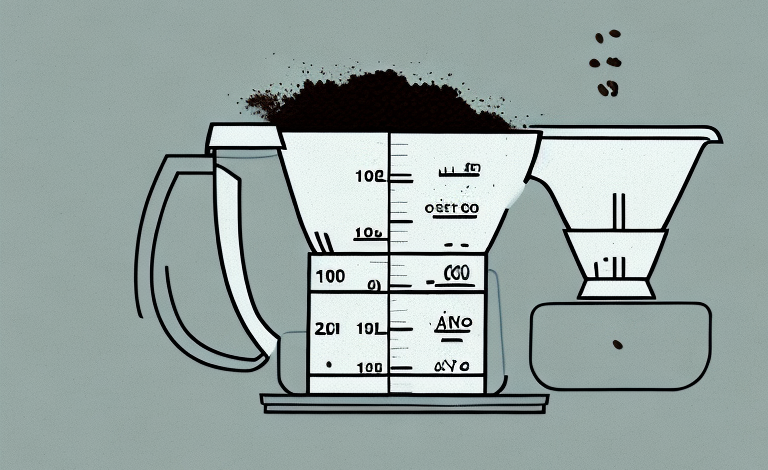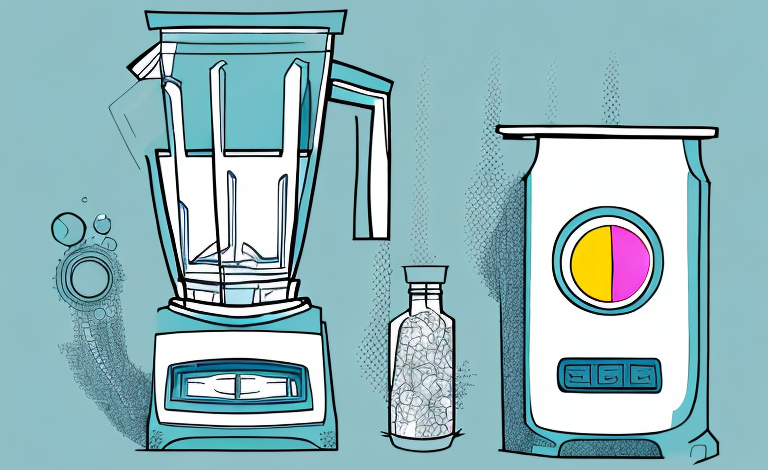Drip coffee is one of the most popular methods of brewing coffee around the world. It is a simple process that involves hot water being passed through coffee grounds, allowing the coffee to drip into a carafe or cup. However, achieving the perfect cup of drip coffee depends on using the right amount of coffee grounds. In this article, we will explore various aspects of brewing drip coffee and provide insights into how much coffee grounds you need for a perfect cup of drip coffee.
Understanding drip coffee and its unique brewing process
Drip coffee is famous for its unique brewing process, where hot water is poured over coffee grounds to extract the flavor from them. This process involves a drip coffee maker, which has a mechanism that heats and dispenses hot water over the coffee grounds. This is followed by the dripping of freshly brewed coffee into a carafe or cup.
One of the advantages of drip coffee is that it allows for a consistent and controlled brewing process. The water temperature, amount of coffee grounds, and brewing time can all be adjusted to achieve the desired strength and flavor of the coffee. Additionally, drip coffee makers are widely available and easy to use, making it a popular choice for home brewing.
However, it is important to note that the quality of the coffee beans and the grind size can also greatly impact the taste of the final product. Using freshly roasted and ground coffee beans can enhance the flavor and aroma of the coffee, while using stale or pre-ground coffee can result in a less desirable taste. Therefore, it is recommended to invest in high-quality coffee beans and a good grinder to achieve the best possible drip coffee experience.
The importance of using the right amount of coffee grounds for a perfect drip brew
The amount of coffee grounds used in a drip coffee maker is crucial in achieving the desired flavor and strength of the coffee. Too little coffee grounds result in weak and under-extracted coffee, while too much leads to a bitter and over-extracted coffee. Therefore, using the right amount of coffee grounds is crucial to the perfect cup of drip brew.
One important factor to consider when determining the right amount of coffee grounds is the type of coffee being used. Different types of coffee have varying levels of density and oil content, which can affect the amount of grounds needed for a perfect brew. For example, a dark roast coffee may require less grounds than a lighter roast to achieve the same strength and flavor.
Another factor to consider is the size of the coffee maker being used. A larger coffee maker may require more coffee grounds to achieve the desired strength, while a smaller one may require less. It is important to follow the manufacturer’s instructions for the specific coffee maker being used to ensure the perfect cup of drip brew every time.
Factors that affect the amount of coffee grounds needed for drip coffee
Several factors can influence the amount of coffee grounds required for the perfect cup of drip coffee. These include the desired strength and flavor of the coffee, the type of coffee beans used, the roast level, and the water-to-coffee ratio. All of these factors play a role in determining the optimum amount of coffee grounds required to brew a delicious cup of drip coffee.
Another important factor to consider when determining the amount of coffee grounds needed for drip coffee is the size of the coffee grind. Different brewing methods require different grind sizes, and drip coffee is no exception. A finer grind will require less coffee grounds, while a coarser grind will require more. It’s important to experiment with different grind sizes to find the perfect balance for your taste preferences.
How to measure coffee grounds for a perfect drip coffee
Determining the correct amount of coffee grounds for a perfect cup of drip coffee requires precise measurement. The general rule of thumb is to use one to two tablespoons of coffee grounds for every six ounces of water. It is, however, essential to refer to the manufacturer’s instructions manual, which provides specific details on how much coffee to use for the perfect cup of coffee.
Another factor to consider when measuring coffee grounds is the type of coffee you are using. Different types of coffee have varying levels of density, which can affect the amount of coffee grounds needed for a perfect cup. For example, dark roast coffee is less dense than light roast coffee, so you may need to use more dark roast coffee grounds to achieve the same strength of coffee.
It is also important to note that the quality of water used in making coffee can affect the taste of the final product. Using filtered or bottled water can improve the taste of your coffee, as tap water may contain impurities that can affect the flavor. Additionally, the temperature of the water used can also impact the taste of the coffee, with the ideal temperature being between 195-205°F.
Different methods of measuring coffee grounds for drip coffee
There are several methods of measuring coffee grounds for drip coffee, including using a tablespoon, a kitchen scale, and a measuring cup. Each method has its advantages and disadvantages. Using a measuring spoon is the simplest method but may lead to inconsistencies. A kitchen scale is the most accurate, but it may not be convenient for everyday use. Finally, a measuring cup provides a quick and easy method of measuring coffee grounds, but it may not be as precise.
Another method of measuring coffee grounds for drip coffee is by using a coffee scoop. A coffee scoop is a specialized spoon that is designed to measure coffee grounds accurately. It is usually made of stainless steel and can hold up to two tablespoons of coffee grounds. This method is convenient and provides consistent results, but it may not be as precise as using a kitchen scale.
It is important to note that the type of coffee beans and the roast level can also affect the measurement of coffee grounds. Darker roasts tend to be less dense, which means that a tablespoon of coffee grounds may weigh less than a tablespoon of lighter roasts. Additionally, freshly roasted coffee beans may release more carbon dioxide, which can affect the volume of the coffee grounds. Therefore, it is recommended to experiment with different methods and adjust the measurements accordingly to achieve the desired strength and flavor of the coffee.
Experimenting with different amounts of coffee grounds to find your perfect brew
Finding the perfect amount of coffee grounds for your taste preference requires experimentation. You may try different amounts of coffee grounds until you get the desired taste and strength. It is recommended to maintain consistency once you find your ideal amount to ensure that each cup is consistently delicious.
Another factor to consider when experimenting with coffee grounds is the type of coffee you are using. Different types of coffee beans have different flavor profiles and may require different amounts of grounds to achieve the desired taste. For example, a light roast may require more grounds than a dark roast to achieve the same level of strength.
It is also important to note that the brewing method can affect the amount of coffee grounds needed. For example, a French press may require more grounds than a drip coffee maker to achieve the same level of strength. Experimenting with different brewing methods and amounts of coffee grounds can help you find your perfect cup of coffee.
Common mistakes to avoid when measuring and using coffee grounds for drip coffee
Some common errors that many people make when measuring and using coffee grounds for drip coffee include using stale coffee beans, using too little or too much coffee, and using an incorrect grind size. It is essential to use fresh coffee beans and to measure the correct amount of coffee grounds based on the manufacturer’s instructions. Additionally, grinding the coffee grounds to the correct size is crucial to achieving the perfect cup of drip coffee.
Another common mistake to avoid when measuring and using coffee grounds for drip coffee is not properly cleaning your coffee maker. Over time, coffee oils and residue can build up in your machine, affecting the taste of your coffee. It is recommended to clean your coffee maker regularly, following the manufacturer’s instructions, to ensure that your coffee is always fresh and flavorful.
Tips and tricks for achieving the right strength and flavor in your drip coffee
Several tips and tricks can help you achieve the perfect strength and flavor of your drip coffee. These include using freshly roasted coffee beans, grinding the coffee beans to the right size, using the right amount of coffee grounds based on the manufacturer’s instructions, using clean water, and brewing the coffee at the right temperature.
Does the type of roast affect the amount of coffee grounds needed for drip brewing?
The type of roast of the coffee beans can affect the amount of coffee grounds required for the perfect cup of drip coffee. Generally, dark roasts require fewer coffee grounds than lighter roasts. It is recommended to refer to the manufacturer’s instructions to determine the best amount of coffee grounds for the roast level you are using.
How to adjust your grind size to achieve the best results in your drip brew
The grind size of the coffee beans plays a crucial role in the quality of the coffee. A coarser grind is preferred for drip coffee to avoid over-extraction, while a finer grind leads to a more concentrated flavor. Adjusting the grind size according to the manufacturer’s instructions can help achieve the best results in your drip coffee.
Understanding the importance of water-to-coffee ratio in achieving a perfect cup of drip coffee
Water-to-coffee ratio is an essential factor in achieving the perfect cup of drip coffee. Using too much water or too little coffee grounds can lead to a weak and under-extracted coffee, while using too little water or too many coffee grounds can result in a bitter and over-extracted coffee. The ideal water-to-coffee ratio is 17.42:1, but it is essential to refer to the manufacturer’s instructions to determine the specific ratio to use for the coffee maker being used.
How much caffeine is in a cup of drip coffee and how it relates to the amount of grounds used?
The amount of caffeine in a cup of drip coffee varies based on the amount of coffee used. Typically, a cup of drip coffee contains 95mg of caffeine per eight-ounce cup. The caffeine content increases with the amount of coffee grounds used. Therefore, it is essential to be mindful of the amount of coffee grounds used in achieving the desired caffeine content.
In conclusion, achieving the perfect cup of drip coffee requires precision in measuring the right amount of coffee grounds. Different factors such as the roast level, type of coffee beans, and water-to-coffee ratio can influence the amount of coffee grounds required. Experimentation and following the manufacturer’s instructions can help determine the perfect amount of coffee grounds for the perfect cup of drip coffee.



